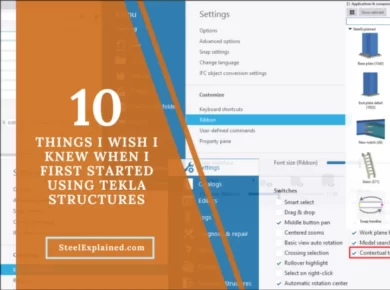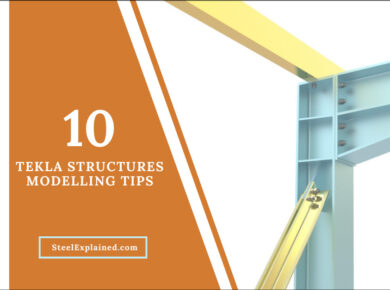Steel detailing is a critical process that requires attention to detail and expertise. One small mistake can compromise the entire structure’s safety and stability. That’s why it’s essential to have quick tips on hand to ensure precision and accuracy during the detailing process. In this article, we’ll provide you with some practical tips to help you streamline your steel detailing and avoid costly errors.
– Quick Tip #1
Always try to match the bracing centre line with the centre of the frame elements. Many detailers ignore this rule so they can model the gusset plate in the corner. But the negative effect is the eccentricity that induces additional moment that is not calculated in the design process.

– Quick Tip #2
Whenever you are modelling a steel bracing, a good practice is to position the gusset plate in the middle of the frame element (column/beam) and put the bracing section a little offset – for the thickness of the connection plate. This way, you will avoid the micro eccentricity in the frame elements and prevent clashes between the gusset plate and the anchors/bolts, if any.

– Quick Tip #3
Always add gaps between steel elements. Usually, 1-2mm is enough. For example, between the stiffener plates and beam flanges or between parts so fabricators and erectors can easily put together and install the assemblies on site.

– Quick Tip #4
When you are modeling steel against existing elements or concrete parts, a good practice is to leave gaps between them and input shims in between with different thicknesses. Because even with site survey information, there should be some tolerance. This way, erectors can easily adjust and install the assemblies on site.

– Quick Tip #5
When you are bolting through profiles with sloped flanges, like INP or UNP, be careful when selecting the bolt assembly, as these profiles require special tapered washers.
If you are using Tekla Structures, there is no direct way to model tapered washers, but you can add your own bolt assembly with a tapered washer and use them in bolt lists, or at least use different bolt assembly for the bolts with tapered washers.

– Quick Tip #6
If you want to exclude certain elements from transferring vertical loads, for example, warehouse endwall posts, so they only transfer lateral wind forces, you need to connect them with slotted holes. They will allow a vertical movement but will still resist the lateral forces.

If you read something you liked on our website, or we helped you with an issue, consider buying us a coffee!



